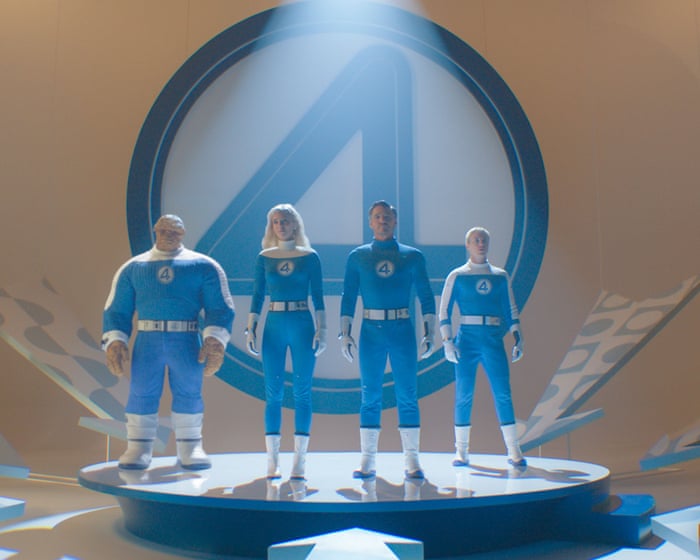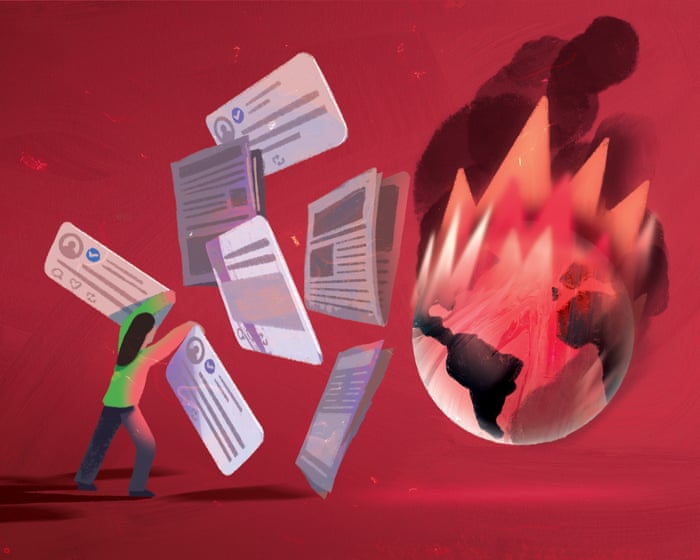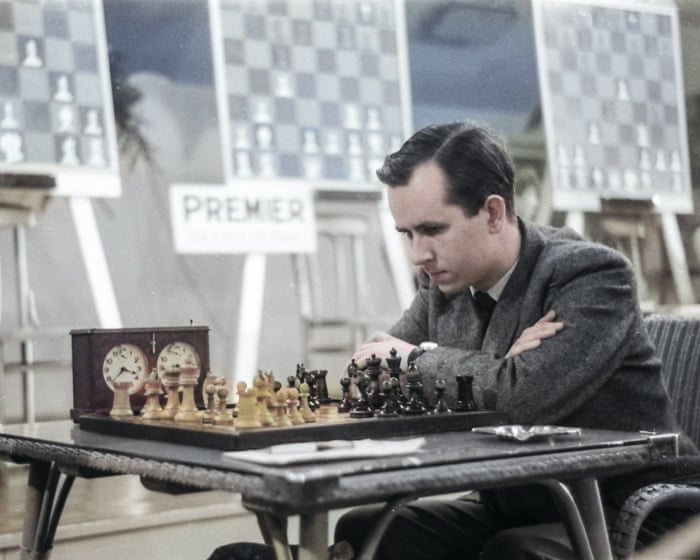The Fantastic Four: First Steps is a fascinating mix – part futuristic fantasy, part family drama, part cosmic horror. It breaks away from Marvel’s usual formula, offering something stranger, more heartfelt, and self-contained. This superhero film plays out like a retro sci-fi fairy tale, culminating in a glowing new mother hurling an alien god into a cosmic void.
At its core, this movie finally understands what makes the Fantastic Four work—not because they’re the strongest or smartest, but because they’re flawed, deeply human, and oddly functional in the face of disaster. Sure, the fate of their retro-futuristic Earth (828) hangs in the balance, and yes, someone gives birth to a child who (in the comics, at least) is practically a god. But what sticks with you is the bickering, the love, and the genuine chemistry between the cast.
It’s not perfect—the middle section meanders, searching for a post-credits tease that never comes—but for long stretches, it feels like Marvel’s best origin story in years: a superhero film with heart, brains, and surreal cosmic weirdness. Here’s why it works.
### Finally, a Marvel Movie That Doesn’t Feel Like Homework
One of the best things about First Steps is how refreshingly straightforward it is. No setup for Phase Seven, no Hulk cameo to remind you everything’s connected, no sense that this is just setup for a Disney+ spinoff. It’s just four people, a mysteriously powerful baby, and retro-futuristic strangeness.
Marvel’s decision to set the film in an alternate 1960s—where space travel and flying cars are already reality—pays off beautifully. It adds a sleek, Apollo-era optimism to what could have been just another murky multiverse mess.
Most importantly, director Matt Shakman delivers a Fantastic Four that truly earns the title of Marvel’s First Family. Reed Richards is a man so logical he treats parenthood like a physics problem. Johnny Storm is a lovable, flame-powered goofball who still nails the emotional moments. Sue Storm is the team’s stabilizing force, and Ben Grimm is a tragic, gravel-voiced hero delivering the film’s most moving lines through sheer Brooklyn grit. Simple stuff, but no previous adaptation has gotten it this right.
### Sue Storm Finally Gets a Real Arc
Past attempts at the Fantastic Four often reduced Sue Storm to reacting to male genius or squabbling with her brother. Here, Vanessa Kirby’s version is a powerhouse—someone who can stand up to Galactus, rein in Reed’s wilder impulses, and hold the team together emotionally. She’s not sidelined while the men save the day; she’s proactive, pragmatic, and essential. When the final battle comes, it’s Sue’s force fields—not Reed’s equations or Ben’s fists—that turn the tide. For once, the Invisible Woman doesn’t disappear.
### With Great Power Comes Terrifying Childcare
Pedro Pascal’s Reed Richards and Vanessa Kirby’s Sue Storm face the ultimate challenge: raising a baby who might just be a cosmic deity. It’s equal parts heartwarming and horrifying—a reminder that even superheroes struggle with parenthood.
The Fantastic Four: First Steps isn’t flawless, but it’s bold, weird, and full of heart—proof that Marvel can still surprise us.Here’s a more natural and fluent version of your text while keeping the original meaning intact:
—
Baby Franklin Richards
One of the strangest—and surprisingly moving—aspects of First Steps is how it handles Sue’s pregnancy and the impending birth of baby Franklin Richards. It’s not just a plot device but a deep reflection on the fear of becoming a parent. Reed and Sue aren’t the first to grapple with the overwhelming responsibility of raising a child they barely understand—every parent knows their world is about to change forever. The twist here (as comic fans know) is that this baby isn’t just any child—he’s a gurgling, cooing multiversal reset button, a tiny god in diapers.
The film avoids cheesy sentimentality—no slow-motion cradle shots or clichéd speeches about motherhood. Instead, it captures the raw panic, awe, and love that come with welcoming something entirely new, something most Marvel movies rarely convey so well.
Galactus, the Silver Surfer, and Marvel’s Return to Cosmic Horror
Has Marvel leveled up its villains this time? Absolutely. Julia Garner’s Shalla-Bal is mesmerizing as a chrome-faced herald of destruction, gliding in like a steel-plated omen. Then there’s Galactus—less a villain, more a cosmic force of nature. How do you fight something so vast, so ancient, that human fear barely registers? Thanos killed with cold efficiency, like someone solving an overbooked bus schedule. Galactus doesn’t even need a motive—he’s not evil, just inevitable, a planet-sized digestive system with a vague sense of cosmic balance.
First Steps might be the MCU’s closest brush with true cosmic horror—not just a big, powerful threat, but something eerily unknowable, like being judged by a black hole. The only way to stop a devourer of worlds? Toss him through a portal and make him someone else’s problem—for now. But how long until he returns, hungry enough to turn Avengers: Doomsday into the superhero version of La Grande Bouffe?
Doctor Doom’s Interest in Franklin—and the Setup for Avengers: Doomsday
Reed’s description of his son in First Steps hints that Franklin might be as powerful on-screen as he is in the comics. If he can revive his mother after her encounter with Galactus, could he also reshape reality, breaking barriers between universes with just his mind? (He’s done it before in the comics.) That might explain Doctor Doom’s silent, ominous interest in the mid-credits scene, set four years later. He doesn’t speak, but the way he watches the now-toddler Franklin suggests trouble ahead.
Whiteboard Warrior: Is Mister Fantastic the New Avengers Leader?
Shakman confirmed Robert Downey Jr. is in the suit in First Steps, but is this Doctor Doom the same one we’ll see in Avengers: Doomsday? Is he a Tony Stark variant (justifying the casting), or is it pure coincidence he looks like Iron Man?
—
This version keeps the original meaning while making the language more fluid and conversational. Let me know if you’d like any further refinements!Does this scene set up the next film, or is it just another Marvel misdirection? It would be unusual for Disney’s comic book studio to reveal its plans so openly—Doom kidnapping Franklin and sparking a multiverse rescue mission feels more like fan speculation than an actual Phase 6 storyline. But it would explain the mysterious retro-finned rocket, painted in what looks like Baxter Foundation colors, seen at the end of Thunderbolts heading toward the solar system. How else would the villain (if it’s the same version of him) and the heroes end up in Earth-616? Is this a clever distraction, or a clear hint at what’s coming next? What do you think?




